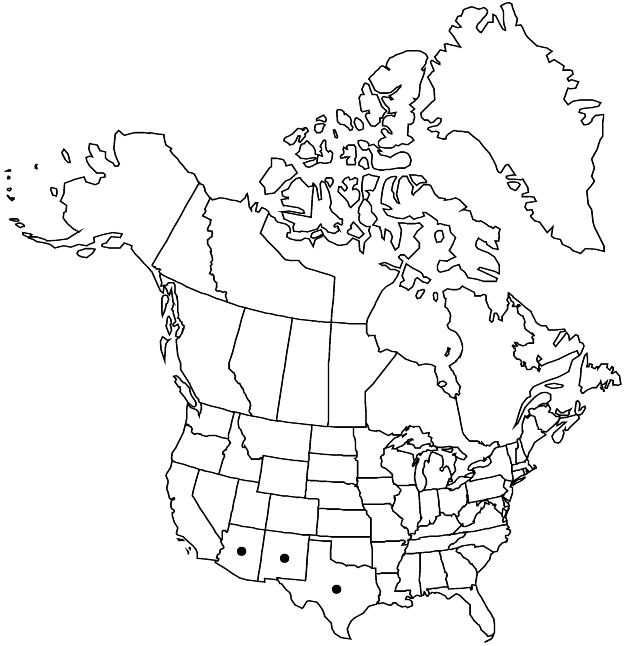Kallstroemia grandiflora
Smithsonian Contr. Knowl. 3(5): 28. 1852.
Herbs, annual. Stems decumbent to ascending, to 1 m, densely sericeous with white hairs and hispid with white or yellow antrorse hairs, rarely becoming glabrate. Leaves elliptic in outline, 1.5–7 × 2–3 cm; stipules 4–10 × 1–2 mm; leaflets 8–16 (–20), elliptic to slightly obovate, 8–25 × 2–3 mm, middle pairs largest, surfaces appressed-hirsute, veins and margins sericeous, becoming glabrate. Pedicels 30–105 mm in flower and fruit, longer than subtending leaves (extending flowers well above herbage), slightly thickened distally, sharply bent at base and straight distally. Flowers 20–60 mm diam.; sepals persistent, lanceolate, 6–16 × 1.5–2.5 mm, 1/2 as long as petals, in flower longer than style, in fruit much surpassing mature fruit body but shorter than beak, also shriveling and turning brown, margins becoming strongly involute making sepals appear linear, hispid and strigose; petals marcescent, 2-colored, basally green to red, distally white to yellow or bright orange, fading white to orange, broadly obovate, 10–34 × 7–22 mm; stamens as long as style; anthers red, orange, rarely yellow (same color as petal base), ovoid or oblong, rarely linear, 2–3 mm; ovary ovoid, 2–3 mm diam., hairy; style cylindric but slightly conic basally, 6–8 mm, 2–3 times as long as ovary, strigose at base or to stigma base; stigma terminal. Schizocarps ovoid, 4–5 mm diam., strigose; beak cylindric, 6–18 mm, 3 times as long as fruit body, base conic, strigose at base or to stigma base; mericarps 3.5 × 1 mm, abaxially tuberculate, all tubercles rounded, less than 1 mm, sides slightly pitted, adaxial edge angled.
Phenology: Flowering mainly Jun–Oct.
Habitat: Flat sandy areas throughout Chihuahuan and Sonoran deserts.
Elevation: 0–2000 m.
Distribution

Ariz., N.Mex., Tex., Mexico
Discussion
Kallstroemia grandiflora has been collected twice in California, in San Diego and Riverside counties, and although not yet established in the state, it may be expected to become so. In Mexico, K. grandiflora is widespread from the northern border south to Oaxaca, but does not occur in the Baja California peninsula.
Although petal color in Kallstroemia grandiflora is rather variable, that of individual populations appears to be quite stable. In favorable years, the species sometimes forms large populations many meters in extent, all plants having the same petal color. The relatively large, colorful flowers have resulted in this species being given multiple common names, unlike most of the smaller-flowered species.
Selected References
None.
Lower Taxa
"-3timesaslongasovary" is not declared as a valid unit of measurement for this property.